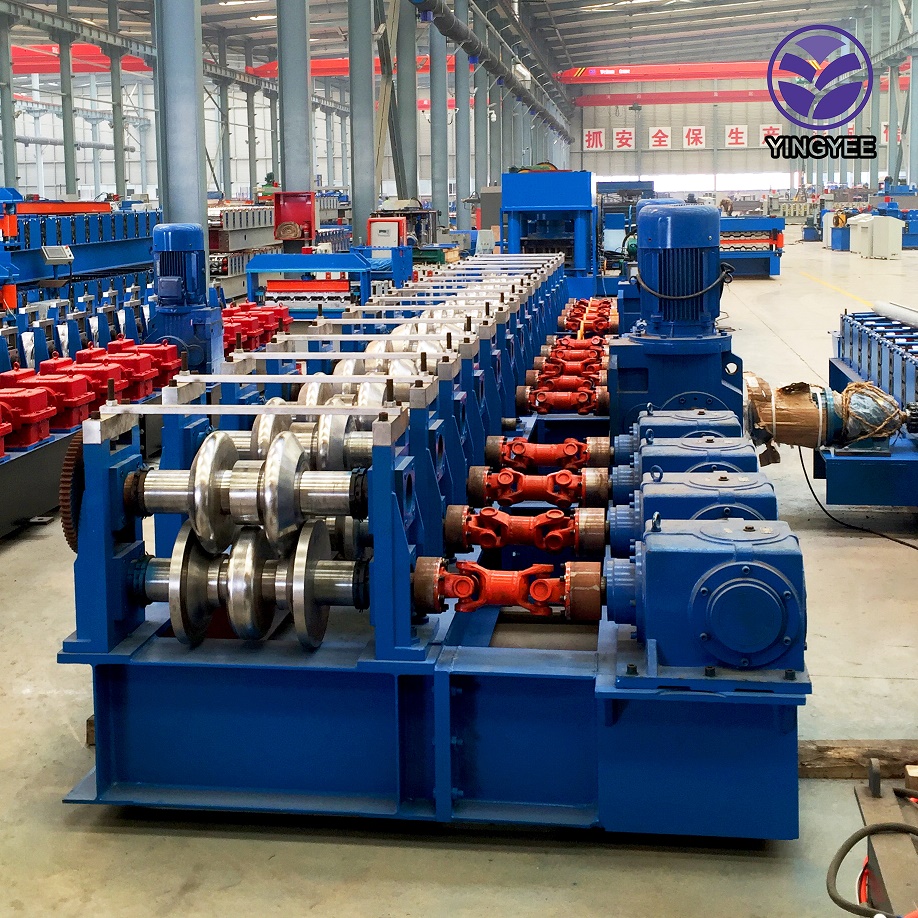
The Ceiling T Grid Roll Forming Machine Revolutionizing Suspended Ceiling Systems
In the realm of modern construction and interior design, the suspended ceiling has gained substantial popularity, offering advantages such as improved acoustics, aesthetic flexibility, and easier access to building services. A crucial component of the suspended ceiling system is the T grid, a framework where ceiling panels are suspended. The manufacturing of these T grids has been revolutionized by the emergence of specialized machinery, particularly the ceiling T grid roll forming machine.
What is a Ceiling T Grid Roll Forming Machine?
A ceiling T grid roll forming machine is a sophisticated piece of equipment designed to produce T-shaped grids used in suspended ceilings. This machine operates through a continuous process that transforms raw steel or aluminum strips into precisely shaped profiles. The roll forming process involves feeding the metal strips through a series of rollers that gradually shape the material into the desired T grid configuration. Once the strips are formed, they can be cut to specified lengths, ensuring uniformity and quality in production.
Advantages of Using a Roll Forming Machine
1. Efficiency and Speed Traditional manufacturing methods for T grids can be labor-intensive and time-consuming. In contrast, the roll forming process automates much of the work, resulting in significantly faster production rates. This efficiency allows manufacturers to meet high demand with reduced lead times.
2. Precision and Consistency The roll forming machine operates with high precision, ensuring that each T grid produced meets strict dimensional standards. This consistency is crucial for easy installation and a professional finish in ceiling applications, minimizing the need for adjustments during installation.
3. Material Utilization Roll forming minimizes waste by continuously utilizing the input material without the need for extensive cutting operations. This not only reduces material costs but also contributes to more sustainable manufacturing practices.

4. Versatile Design Options The flexibility of roll forming machines allows for the creation of various T grid profiles and designs, catering to diverse architectural needs. Manufacturers can customize configurations based on application requirements, such as load-bearing capacity or aesthetics.
5. Durability and Strength The materials used in T grids are typically robust, and the manufacturing process enhances their durability. The resulting products are not only lightweight for ease of handling but also strong enough to support panels securely.
Applications and Industries
The versatility of the ceiling T grid roll forming machine means its products find applications in various sectors, including commercial buildings, educational institutions, hospitals, and residential projects. These grids support a range of ceiling panel types, including acoustic tiles, plasterboard, and metal panels, making them suitable for diverse environments.
The Future of T Grid Manufacturing
As technology advances, new features and automation capabilities are consistently being integrated into roll forming machines. Innovations such as computer numerical control (CNC) and robotics are enhancing production efficiency and precision even further. Manufacturers are now able to produce T grids that conform to specific design and regulatory standards effortlessly.
In summation, the ceiling T grid roll forming machine represents a pivotal advancement in the construction industry, providing an efficient, precise, and flexible solution for producing essential components of suspended ceilings. As the demand for aesthetically pleasing and functional interior spaces continues to grow, the importance of high-quality T grids and the machinery that produces them will undoubtedly remain at the forefront of construction innovation.